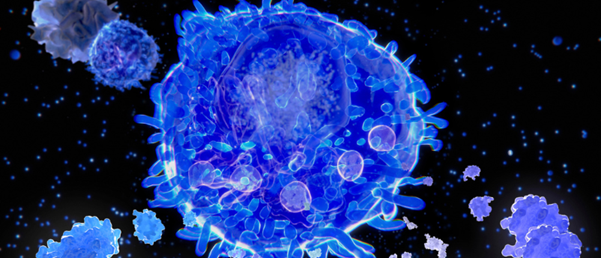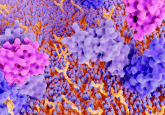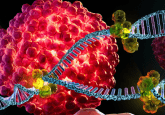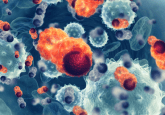Newly uncovered pathway provides insight into inflammatory response

Researchers have identified several steps in the pathway that triggers the production of interleukin-1 beta, a key cytokine involved in the inflammatory response.
Inflammation is an essential part of the body’s response to harmful stimuli; however, in some people, the inflammatory response sustains even when there are no stimuli, which can result in damage to cells and tissues. To better understand this process, researchers from Cedars-Sinai Medical Center (CA, USA) investigated the cytokine interleukin-1 beta (IL-1β), which is an important mediator in the inflammatory response. They identified several steps that lead to the production of IL-1β, which could help find a treatment for diseases associated with chronic inflammation.
When the innate immune system identifies potentially harmful stimuli, such as a pathogen, it responds by directing white blood cells to the area to deal with it. In prolonged or chronic inflammation, this process continues when there are no stimuli and can cause damage to healthy cells, which can potentially result in diseases like type 2 diabetes, heart disease and depression.
“Inflammation, in many instances, is vital to a thriving immune system and healthy body,” commented David Underhill, a senior and corresponding author of the study. “However, prolonged inflammation can wreak havoc on the body. This underscores the importance of understanding the cellular process of how inflammation is activated so we can work toward finding new treatments to curb chronic inflammation.”
 Sowing the seeds of diagnosis: a novel assay for abnormal α-synuclein detection
Sowing the seeds of diagnosis: a novel assay for abnormal α-synuclein detection
A novel assay that can detect synucleinopathies from patient sera offers a fast method for diagnosing neurodegenerative diseases.
This study on IL-1β builds on previous work by Cedars-Sinai that found that hexokinase, an enzyme used to convert glucose into energy, also plays a role in inflammation. They discovered that hexokinase binds to a sugar that has been liberated from the cell wall of an invading bacteria and activates inflammasomes, which leads to the production of IL-1β.
In the current study, the researchers used super-resolution microscopy to visualize the process that leads to IL-1β production and inhibitors and gene knockout experiments to determine the proteins involved in specific steps. They found that hexokinase leaves the mitochondria, which destabilizes the mitochondria, thus alerting the cell that something is wrong. Voltage-dependent anion channels then cluster in the membrane of the mitochondria, which interacts with NLRP3 and initiates inflammasome assembly. The inflammasomes then produce IL-1β, which helps drive the inflammatory response.
“Being able to target specific steps in this pathway is vital, because in addition to being important for inflammation, the components of this pathway also play a vital role in maintaining energy within the cell,” commented Andrea Wolf, a senior and corresponding author of the study. “We want to home in on its inflammatory role, not just turn it all off, because that would be bad for the cell.”
The researchers are continuing to study this pathway and hexokinase’s role in inflammation and will use their findings from this and subsequent studies to target this inflammatory pathway in different diseases.





